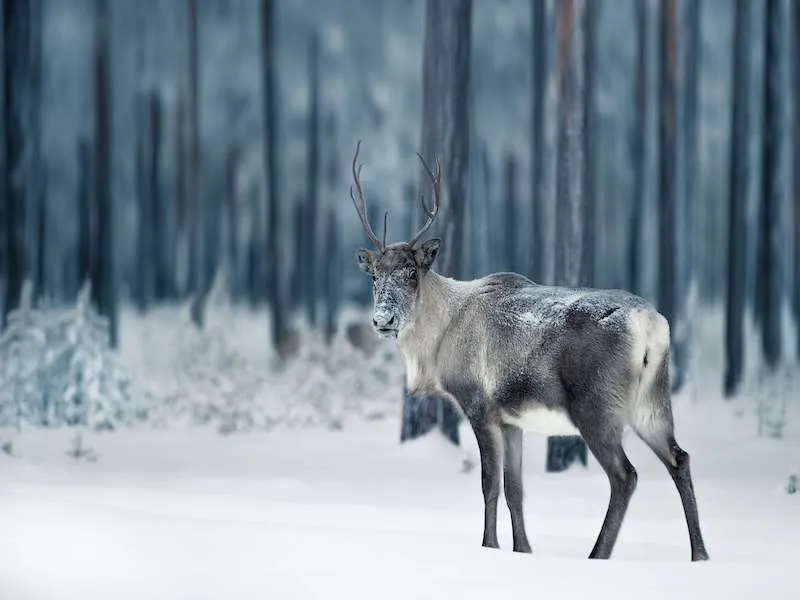Christmas cervines

Reindeer are a Christmas icon, but how much do we know about these cervines (deer-like creatures)? Here are some fun facts.
- Reindeer have 2 layers of coat. Their underneath layer is woolly and warm but the top layer of hairs is hollow. These hollow, air-filled hairs create an important layer of insulation so the reindeer can keep warm. In fact, they are so good at insulating a reindeer, deer can lie down without melting the snow around them. The hollow hairs also allow reindeer to swim well, as they help keep them buoyant. Indigenous people often use reindeer hair to keep themselves warm.
- Reindeer are the only deer species where both the males and females grow antlers. For other species, just the male deer have antlers. Reindeer shed their antlers and then re-grow them every year. For male reindeer, shedding happens in late autumn, but for females this is in spring because being able to fight for food is critical during their winter pregnancy. This fact has led to much debate over whether Santa’s reindeer are male or female. Santa’s reindeer have antlers over the northern hemisphere’s winter Christmas period, so many scientists think Rudolph must be female!
- Reindeer really do have rosy red noses – that is, if you look at them under thermal imaging. Researchers got reindeer to exert energy on a treadmill and then looked at their bodies using a thermal camera to see which areas had the most blood. The thermal images showed that the nasal area looked bright red under the infrared spectrum. Reindeer have 25 per cent more capillaries (little blood vessels) in their noses than humans do. This is to help keep this vulnerable area warm in freezing conditions. These external blood vessels also help to regulate internal body temperature because reindeer can’t sweat.
- Reindeer can see ultraviolet (or UV) light. Most mammal’s eyes (including ours) cannot see UV light, which is out of the visible spectrum. In fact, our eyes can be temporarily burned by UV light (this is what we call snow blindness). Reindeer eyes have adapted to see UV light to make sense of the snowy landscape (which reflects a lot of UV) by looking for things that absorb UV light. Things that absorb UV light appear black in the otherwise white landscape. For example, urine and fur absorb UV, which is a sign that predators or other reindeer are around. Lichen (small plants that reindeer eat to survive the winter) also absorb UV, so this helps reindeer to find food.
- Reindeer change the colour of their eyes depending on the season. During the snow-melted summer months, reindeer have golden eyes. The colour difference isn’t immediately visible and you would need to shine a torch on the reindeer’s eye to see the colours (or look at dissected eyes as the scientists did to discover this). The part that changes colour is called the ‘tapetum lacidum’ and it helps animals to see in dim light. The tapetum lacidum is a reflective layer that reflects light that passes through the retina (the retina is the main part of your eye that sends messages to your brain). This reflective layer gives the retina a second chance to register any light coming into the eye. Most mammals have this golden tapetum, which is why when you take a flash photograph of an animal, its eyes glow yellow, because the tapetum lacidum is reflecting the light from your camera. But reindeer only have this golden glow in summer. In winter, their tapetum is blue. In dim light, their irises (the coloured part of the eye) contract and pupils (the little black dot) widen to allow more light in. In humans, this happens only in dark situations. But for reindeer, it lasts for months over the Arctic winter. This iris contraction causes pressure in the eye and the eye’s fibres compress together, changing the type of light that they reflect: instead of reflecting yellow light, the reindeer’s eyes reflect blue wavelengths of light. Reindeer eyes are more sensitive to light during the winter, but more research is needed to understand how all this links to the changing of tapetum colour – and helps guide Santa’s sleigh!
Date Posted:
December 13, 2020
